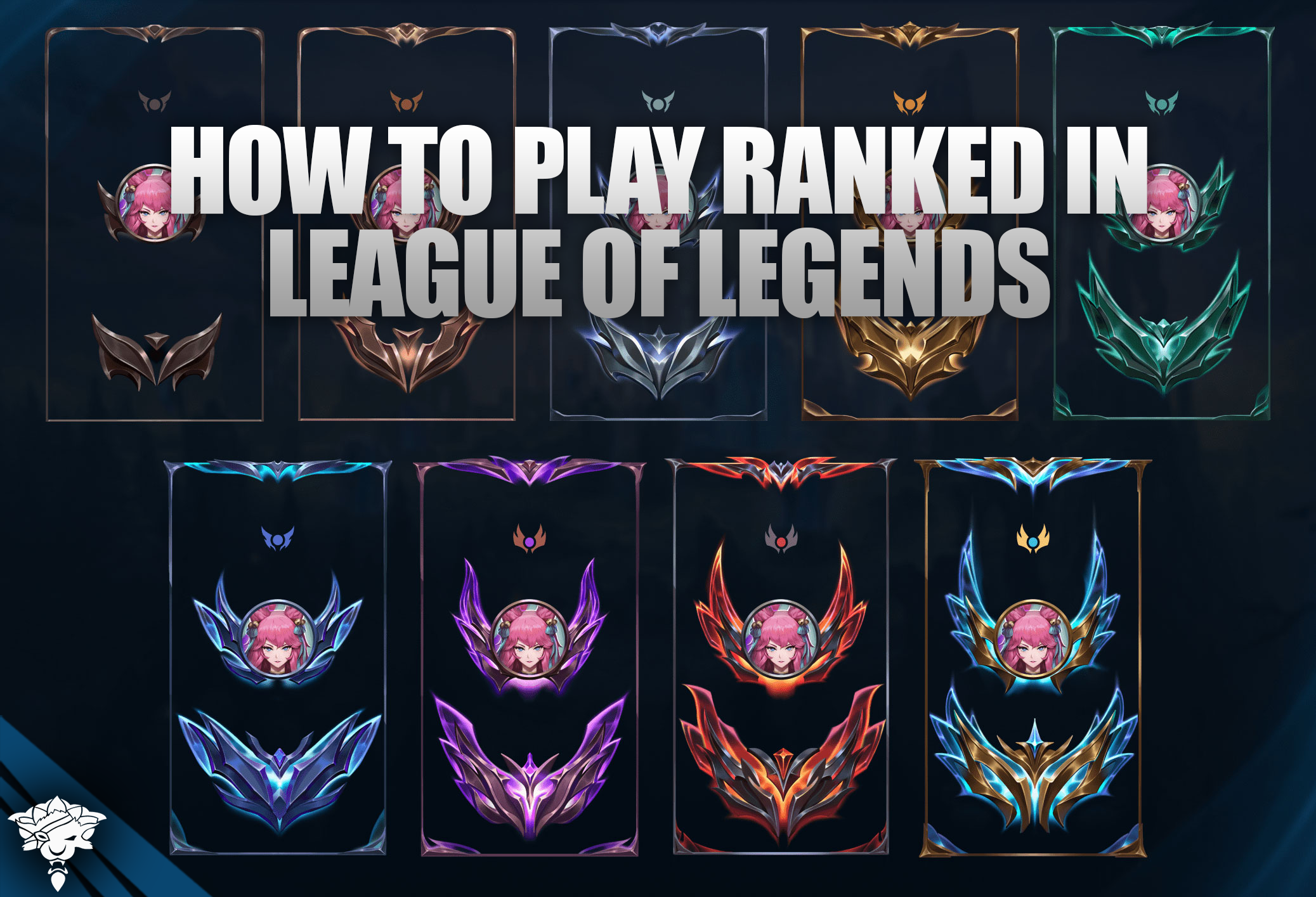League of Legends is one of the most popular multiplayer online battle arena (MOBA) games, with millions of active monthly players. For many players, ranked gameplay is an exciting way to test their skills and see how they stack up against other players.
First, we'll provide an overview of all LoL Ranks. We'll look at the LoL Ranked Requirements you need to fulfill before you can start playing ranked matches. Next, we'll explain the League of Legends ranking system and the different tiers and divisions that make up the ladder. Finally, we'll dive into details on how the ranked system works, including how LP functions.
An Overview of All LoL Ranks
League of Legends ranks are a tiered system with divisions within each tier. Each tier except Master, Grandmaster, and Challenger contains four divisions. The ranks in LoL from lowest to highest are:
Iron (Divisions IV ⇒ I)
Bronze (Divisions IV ⇒ I)
Silver (Divisions IV ⇒ I)
Gold (Divisions IV ⇒ I)
Platinum (Divisions IV ⇒ I)
Emerald (Divisions IV ⇒ I)
Diamond (Divisions IV ⇒ I)
Master
Grandmaster
Challenger
The lowest rank is Iron IV and the highest is Challenger. Players must win games and gain LP (League Points) to progress through the divisions and advance to the next tier. The higher the rank, the more skill, game knowledge, and competitiveness are required to advance.
Also Read: Best 5 Supports for Smolder in League of Legends
League of Legends Ranking System
The League of Legends Ranking System uses a hidden Matchmaking Rating (MMR) to determine your skill level and match you with players of similar ability. Though your exact MMR is kept secret, the results of it are reflected in your rank, tier, division, and League Points (LP).
Each player has a separate MMR for normal games and ranked queues. When you first start playing ranked, your initial placement is influenced by your normal game MMR as a seed. However, from that point forward, your ranked MMR is completely separate.
Winning ranked games increases your MMR while losing decreases it. The system tries to match teams so that each has around a 50% chance of winning. When your MMR is significantly higher than your current rank, you'll gain more LP per win and lose less per defeat to help you climb faster. If your MMR is lower than your rank, the opposite will occur to get you to the appropriate rank.
The tier and division system provides milestones for progress. There are 10 tiers divided into divisions, with 4 divisions per tier except for Master, Grandmaster, and Challenger. To advance divisions, you need to gain 100 LP by winning games. Once you hit 100 LP, you'll automatically be advanced to the next rank
The interplay between MMR, LP, and rank determines the pace of your seasonal climb. MMR is the true measure of skill, while rank and LP help track your progress and give context compared to other players. Understanding how they work together is key to climbing the ladder efficiently.
Also Read: LoL Pass: Lunar Revel 2024
LoL Ranked Requirements
Before you can start playing ranked matches in League of Legends, there are a few requirements your account must meet:
You must have at least 20 champions unlocked. Having access to multiple champions ensures you'll be able to pick for your team or trade champions with teammates during the drafting phase.
Your account must be at least Level 30. This ensures you have enough normal games played to have a reasonable understanding of macro gameplay, objectives, and champion abilities before jumping into competitive play.
Leveling an account to 30 and unlocking 20 champions can take a significant amount of time. An alternative is to purchase a ranked-ready LoL account from smurfers.net. These accounts come pre-leveled to 30 with plenty of champions and skins unlocked, allowing you to skip straight to ranked play.
Once your account hits Level 30 and you have 20+ champions, you'll unlock the ability to play placement matches at the start of each ranked season. Your performance in these placement games helps determine your initial rank. After placements, you can begin the competitive grind of working your way up the ladder! Just remember to keep expanding your champion pool as you progress. A deep roster gives you the flexibility to adapt picks and strategies as you advance to higher ranks.
Also Read: LoL Custom Skins: Can You Get Banned for Using It?
Conclusion
To sum up, ranked in lol provides a competitive environment to test your skills against other ambitious summoners. But climbing the ladder requires patience, persistence, and constantly improving your gameplay. Knowing the ins and outs of the LoL ranking system will help you set realistic goals and measure your improvement from session to session and season to season.
Start by meeting the requirements for ranked access. Then maintain a positive mindset as you work your way up in All LoL Ranks from Iron to Challenger. Analyze your mistakes and expand your champion pool to increase flexibility in drafts. With the right attitude and dedication to growth, the competitive thrills of ranked await.
Finished reading? Check out our LoL Boosting service. We also offer a wide selection of high-quality League of Legends accounts. With our premium Smurf accounts, you can jump into the game with an advantage, skipping the grind and unlocking new opportunities.

